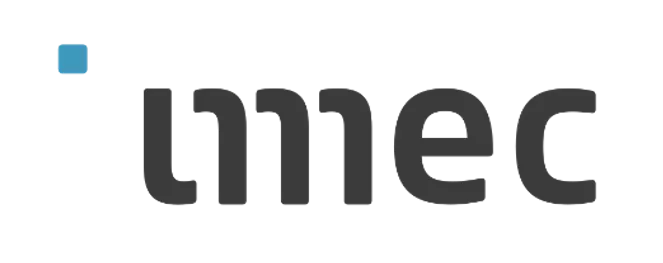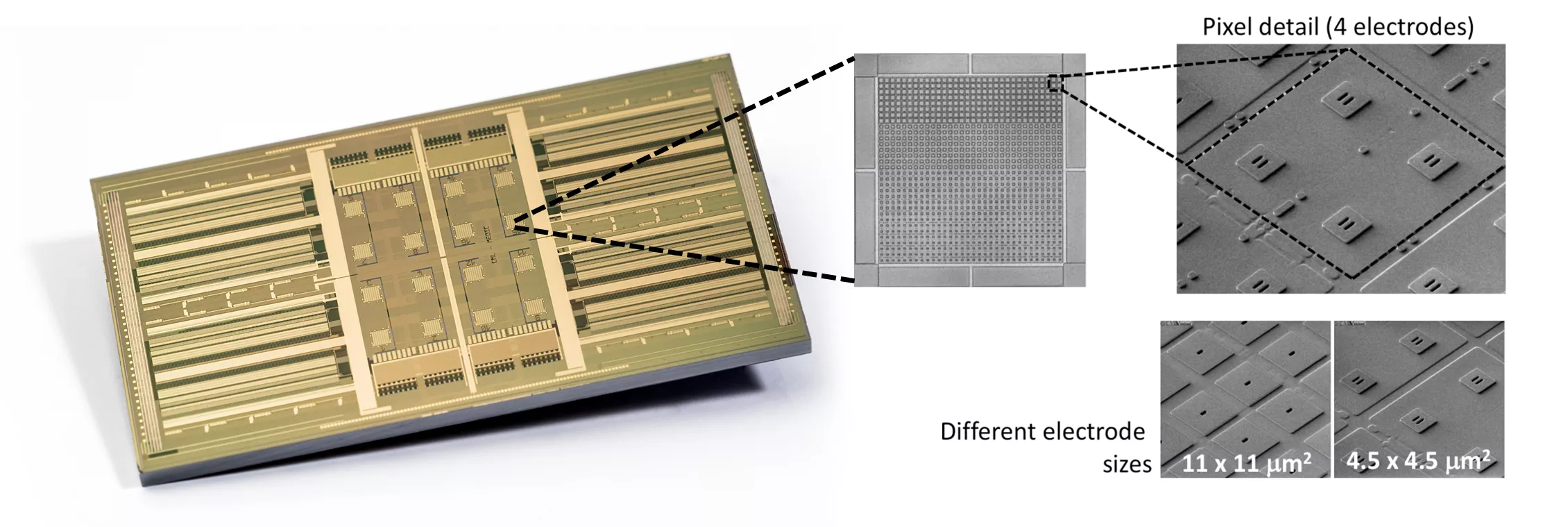
The recent global pandemic redefined well-established paradigms in healthcare. The classic model involving frequent hospital visits is no longer viable due to the risk of contagion. The focus is now on remote and pervasive vital sign monitoring solutions and automated data processing for health assessment.
Social-distancing-friendly technologies, such as wearables, implantables, insertables and ingestables that enable long-term monitoring, can help detect medical abnormalities both in individuals and large populations. SEMI spoke with Carlos Agell, program manager and principal member of Technical Staff at imec, about remote vital sign monitoring using innovative form factors and methodologies. imec’s healthcare technology vison for remote care systems will be the focus of Agell’s presentation at the SEMI MedTech Forum, 19 February, as part of the SEMI Technology Unites Global Summit, 15-19 February 2021, online event.
Join us to meet experts from imec and other key industry influencers. Registration is open.
SEMI: What is driving innovation in diagnostics and what is the role played by the semiconductor industry?
Agell: There is a clear need for remote diagnostics triggered by the COVID-19 pandemic. Two examples are respiration monitoring and SARS-CoV2 testing technologies.
The fact that some of the more obvious symptoms of COVID-19 are respiratory has revealed a big gap in medtech: the need for low-friction, ambulatory, continuous and pervasive respiratory monitoring solutions. At imec we have been working on bioimpedance-based technologies (from chipsets to smartphone-enabled sensing devices) that can provide feasible solutions in that space. Hence, novel sensing modalities from the semiconductor industry can make a difference when it comes to remote ambulatory respiratory monitoring.
 On the other hand, SARS-CoV2 diagnostic technologies have become paramount during the health crisis. In this space there is a clear need to simplify, speed up and lower the cost of testing. Additionally, from a practical perspective society needs to prevent virus spreading. imec is spearheading an innovative semiconductor-based solution aimed at simplifying SARS-CoV2 testing by collecting aerosols from subjects’ breath using a silicon-based solution for analysis using the polymerase chain reaction (PCR) method, the gold standard in COVID-19 testing.
On the other hand, SARS-CoV2 diagnostic technologies have become paramount during the health crisis. In this space there is a clear need to simplify, speed up and lower the cost of testing. Additionally, from a practical perspective society needs to prevent virus spreading. imec is spearheading an innovative semiconductor-based solution aimed at simplifying SARS-CoV2 testing by collecting aerosols from subjects’ breath using a silicon-based solution for analysis using the polymerase chain reaction (PCR) method, the gold standard in COVID-19 testing.
Determining viral load in exhaled breath is a clear indicator of infectiousness, and detecting subjects with a high viral load is key when developing these rapid tests to facilitate economic recovery. A cost-effective and speedy though reliable SARS-CoV2 testing solution opens up possibilities for its use as gating mechanism (such as testing to allow access to facilities and prior to boarding a plane) to help jump-start some of the hardest-hit sectors in the economy, such as travel and hospitality (hotels and restaurants) by enabling more in-person interactions.
SEMI: Please share more about imec’s commitment to improving the healthcare sector.
Agell: imec R&D is active in the field of remote unobtrusive respiration solutions, which are vital in treating respiratory system conditions such as asthma, chronic obstructive pulmonary disease (COPD) and COVID-19. These solutions rely on a combination of silicon chipsets, sensor integration and algorithms to interpret sensor data.
 As part of our effort to understand biological fundamentals, imec’s multi-electrode array (MEA) platform for heart-on-chip applications offers unparalleled capabilities to acquire high-density information (4444 electrodes/mm2) to enable extra- and intracellular recordings, electrical stimulation and impedance gauging to study patient-derived cardiomyocytes, cells that make up the heart muscle.
As part of our effort to understand biological fundamentals, imec’s multi-electrode array (MEA) platform for heart-on-chip applications offers unparalleled capabilities to acquire high-density information (4444 electrodes/mm2) to enable extra- and intracellular recordings, electrical stimulation and impedance gauging to study patient-derived cardiomyocytes, cells that make up the heart muscle.
imec is developing a rapid, low-cost SARS-COV2 test based on breath analysis (aerosol capture) aimed at a 5-minute analysis. Such tool is a key to economic recovery, and imec is planning large-scale testing of the prototype device at Brussels Airport later in 2021.
imec has recently supported spinoffs and external companies that develop social distancing tools for usage during the pandemic. Healthcare is a key strategic area at imec, with multiple departments working on complementary topics, ranging from cell-sorting technologies and multi-electrode arrays, through sensors and systems for non-invasive cardiorespiratory and neurological monitoring, all the way to advanced processing of medical data and tooling for trials.
SEMI: How is the pandemic impacting remote diagnostics? What’s new in that field?
Agell: The pandemic has accelerated advances in remote diagnostics for healthcare – for example making remote doctor visits possible and launching telehealth into a successful sector. But in my opinion, this is just the starting point. Telehealth doctors will soon need to collect health data points such as body temperature, weight, or blood pressure remotely, the same information they collect during an office visit. Soon thereafter though, doctor’s will need more and more data, sparking the next stage of advances in remote diagnostics as algorithms are developed to analyze sizeable amounts of data. All in all, it will result in a big move from doctor-centric paradigms to more patient-centric solutions. Hopefully that jump will also drive a more proactive approach to health, enabling prevention and keeping people healthy, and leaving behind the era of curing the sick.

imec research tools for respiratory monitoring will come in the form of a health patch.
SEMI: Besides infectious disease diagnostics, what solutions will enable a paradigm shift? Can you name two global market trends related to the rising need for remote diagnostics?
Agell: The paradigm shift in healthcare will be largely fueled by the hyperconnectivity trend. Communications are fast and far-reaching. The pandemic has proven that healthcare, similar to retail, banking, trading and business in general, can also be done partly remotely through a communications line.
The need for proof of performance in the case of diagnostics has been proven challenging, due to the highly regulated medical field and the general conservativeness of this market. There is a clear trend underway in which algorithms and automated diagnostics are slowly gaining the trust of the medical community. Trials and regulatory submissions will help here, but the clear proof will be the general trust of the medical community (and general population) in solutions that have been on the market for a while. Similar to what happened with GPS navigation technologies back in the day, it would require a critical mass to reach general acceptance.
As far as the healthcare market is concerned, there is a forecast bounce back from telehealth into hybrid models (a mix between in-office visits and telehealth) as a first post-pandemic scenario. Although this is perceived as the best of both worlds, its effectiveness and survival within the market is still to be proven.
A clear market trend accelerated by the pandemic is the commoditization of health and wellness features in consumer electronics. A glimpse into consumer electronics venues reveals that watches, smartphones, weight scales and even your office chair or mattress will soon be collecting healthcare information.

imec MultiElectrode Array (MEA) chipset
SEMI: What is imec’s role in addressing the challenges and trends in healthcare?
Agell: As an R&D organization, imec offers expertise in the semiconductor, integration, data interpretation, data management and health-specific application domains.
Thanks to our experience in horizontal technology and multiple application domain verticals (including healthcare), imec provides solutions to partners that push the boundaries of performance in health-tangential fields such as communications, consumer electronics, automotive and energy. imec is part of big European initiatives aiming to tackle the challenges of the pandemic. For example, we recently started working on the Digipredict project, which aims at early intervention in infectious diseases. We’re working with key players in the research domain within the EU such as École Polytechnique Fédérale de Lausanne, University of Twente and Eidgenössische Technische Hochschule Zürich.
Additionally, imec has worked for market leaders in the healthcare sector such as Philips and Biotelemetry (recently integrated in Philips) and can help partners make the next health solution a reality.
SEMI: How can technology unite us? What do you expect from your participation at SEMI Technology Unites Global Summit?
Agell: I am a big optimistic on this pandemic. I believe technology has played a key role in putting boundaries around damage caused by the global health crisis. Technology does not only unite us, but it arguably saves lives!
My personal expectation for the SEMI Technology Unites Global Summit is for us to get a better understanding about how the semiconductor industry reacts to a pandemic and upcoming post-pandemic scenario. I am curious to see if health-related trends emerge, and whether this is a transitory effect. During the last global pandemic, the semiconductor industry was not even existing, so there is no clear precedent for the current situation.
 Carlos Agell, program manager and principal member of Technical Staff at imec, where he oversees the development of projects and sets strategy directions for research topics. He has a background in wearable device development, having taken leadership roles in development of two FDA-approved medical devices in the field of wearable cardiology. He is member of the Dutch chapter of the standardization committee, which develops next-generation international standards for active medical devices. Carlos Agell holds two MSc degrees in Electronics Engineering and EECS from the Polytechnical University of Catalonia (Spain) and the University of California in Irvine (Irvine, CA, USA).
Carlos Agell, program manager and principal member of Technical Staff at imec, where he oversees the development of projects and sets strategy directions for research topics. He has a background in wearable device development, having taken leadership roles in development of two FDA-approved medical devices in the field of wearable cardiology. He is member of the Dutch chapter of the standardization committee, which develops next-generation international standards for active medical devices. Carlos Agell holds two MSc degrees in Electronics Engineering and EECS from the Polytechnical University of Catalonia (Spain) and the University of California in Irvine (Irvine, CA, USA).
Serena Brischetto is senior manager of Marketing and Communications at SEMI Europe.
